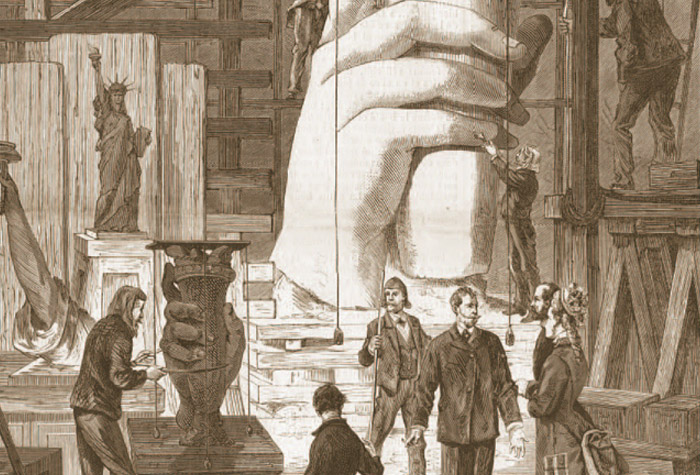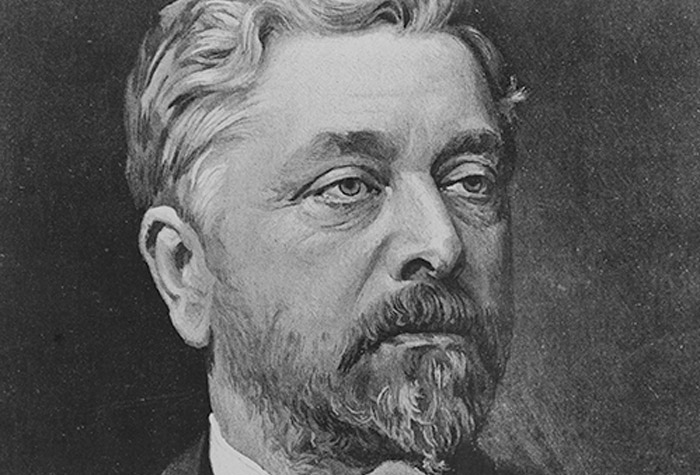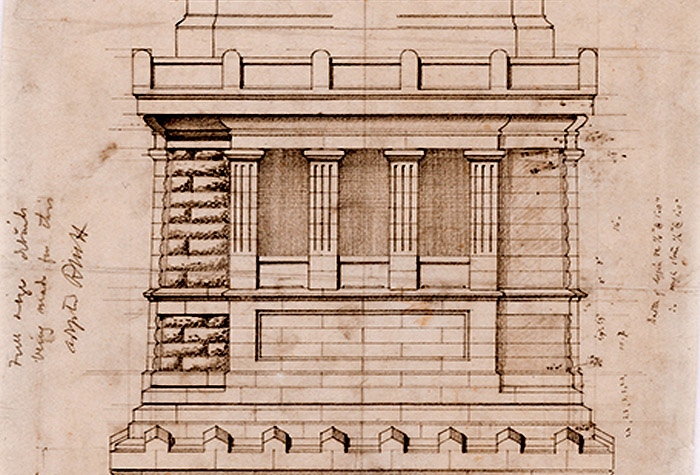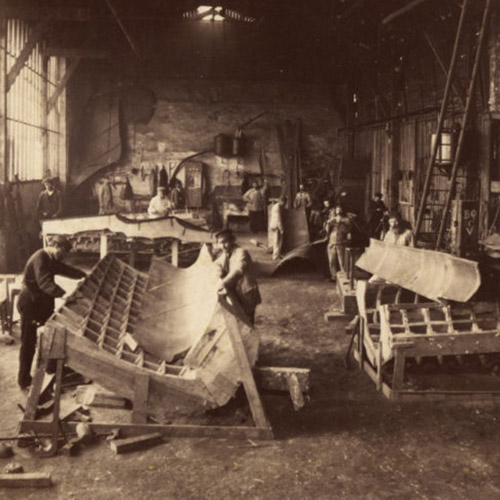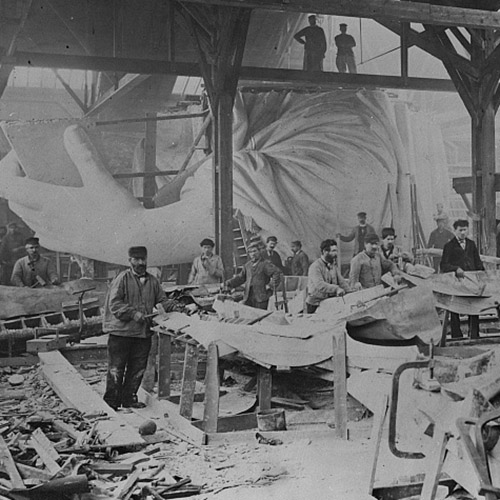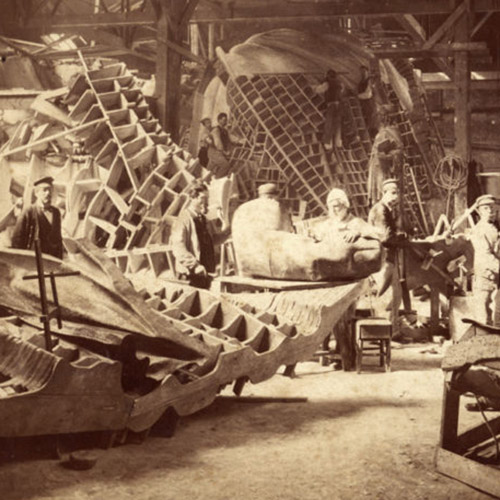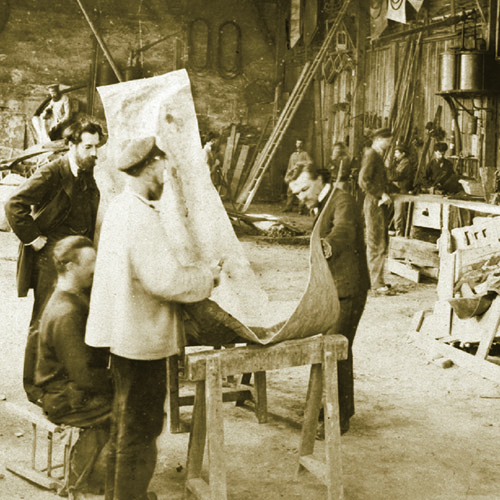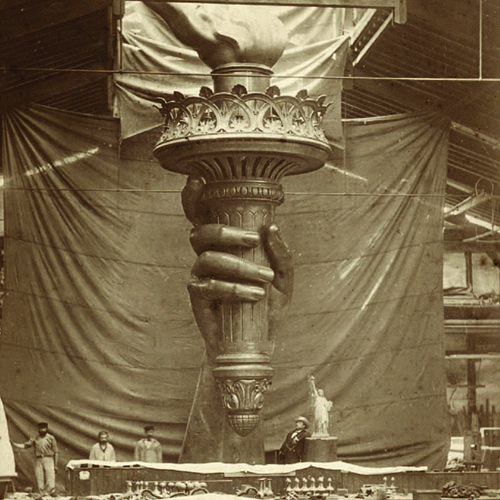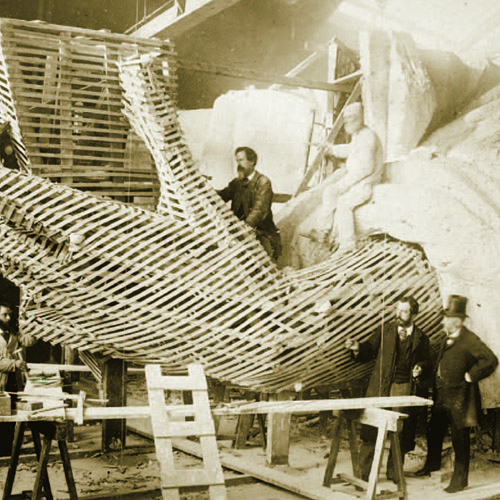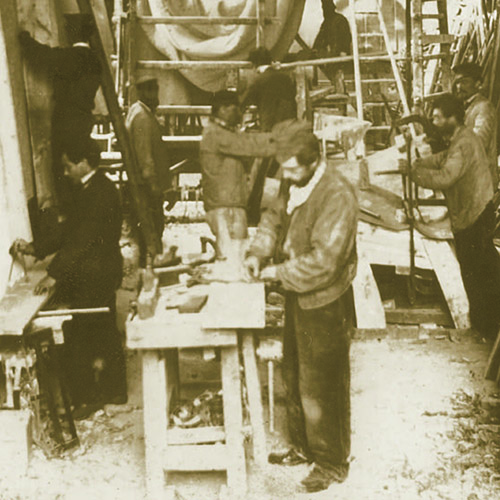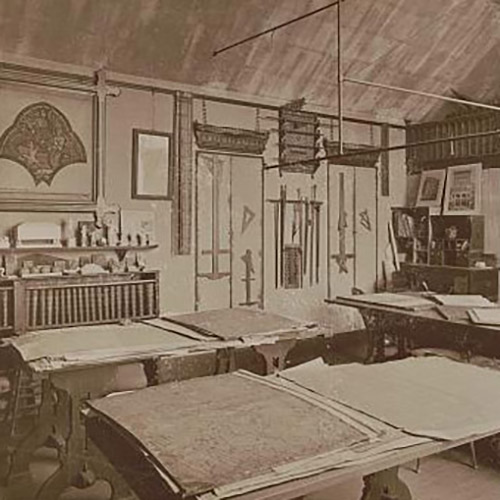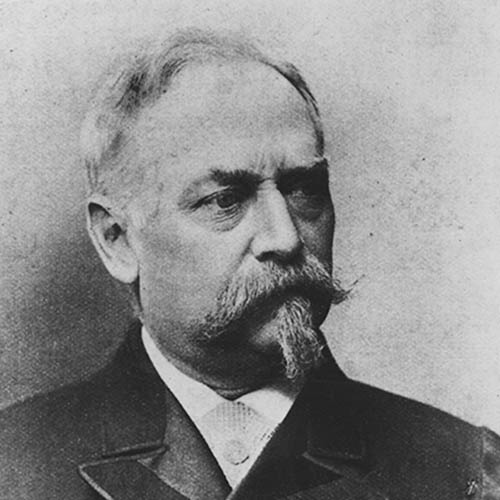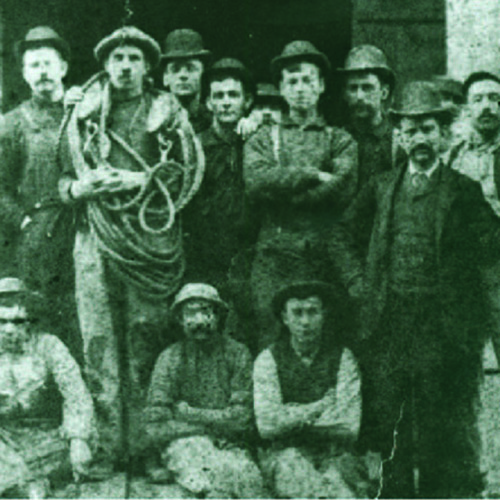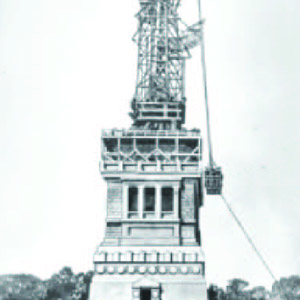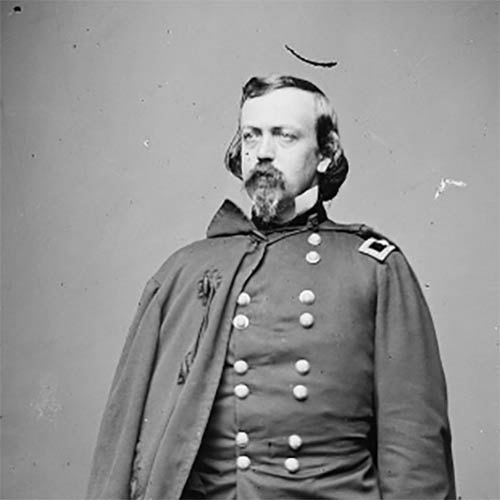Constructing Liberty
Frédéric-Auguste Bartholdi’s grand interpretation of liberty required an equally innovative construction plan. Designed in an era witnessing the triumph of industry and technology, Bartholdi’s colossus was recognized as one of the greatest technical achievements of the 1800s and hailed as a bridge between art and engineering.
The Statue was designed by a few but built by many. Beginning in 1875, over 60 craftsmen at the renowned metalworking firm Gaget, Gauthier & Compagnie oversaw the Statue’s creation. Bartholdi supervised every aspect of construction, which involved both traditional techniques and new technologies. Stone, marble, and bronze were too heavy and costly for a statue standing at 151 feet, so workers used an ancient metalworking process known as repoussé (from the French “to push forward”), hammering the form out of thin sheets of copper.
With this lightweight copper skin connected to an ingenious interior framework, Bartholdi’s vision of liberty took shape into what was then the tallest monument in the world.
Supporting the Statue
Frédéric-Auguste Bartholdi hired Alexandre-Gustave Eiffel, one of France’s most innovative engineers and a brilliant bridge designer. For the Statue, Eiffel used a three-part structure of wrought iron. A skeletal tower was built around a 96-foot-tall central pylon. A secondary framework, consisting of diagonally braced lightweight trusswork in irregular sections, connected armature bars on the copper skin to the center and acted like springs. Strong but flexible, this interior system stabilized the Statue while allowing it to expand and contract with temperature changes and even sway gently in strong winds.
A Befitting Pedestal
Frédéric-Auguste Bartholdi initially envisioned the Statue’s pedestal as a high “Fortress of Liberty.” When renowned American architect Richard Morris Hunt won the commission to design it, he faced a unique challenge. The pedestal had to be large enough to hold the immense Statue but could not overshadow it. Hunt incorporated some of Bartholdi’s ideas and also experimented with models of his own, sending the sculptor sketches of his progress. The pair considered everything from a domed base to a Mesoamerican pyramid before finally agreeing on a classical design. Hunt drew on his experience creating massive public buildings and integrated various vantage points to create aesthetically pleasing vistas both of and from the monument. His pedestal enhances the scale and grandeur of the Statue, serving as a bold and noble stage for Bartholdi’s masterpiece.
